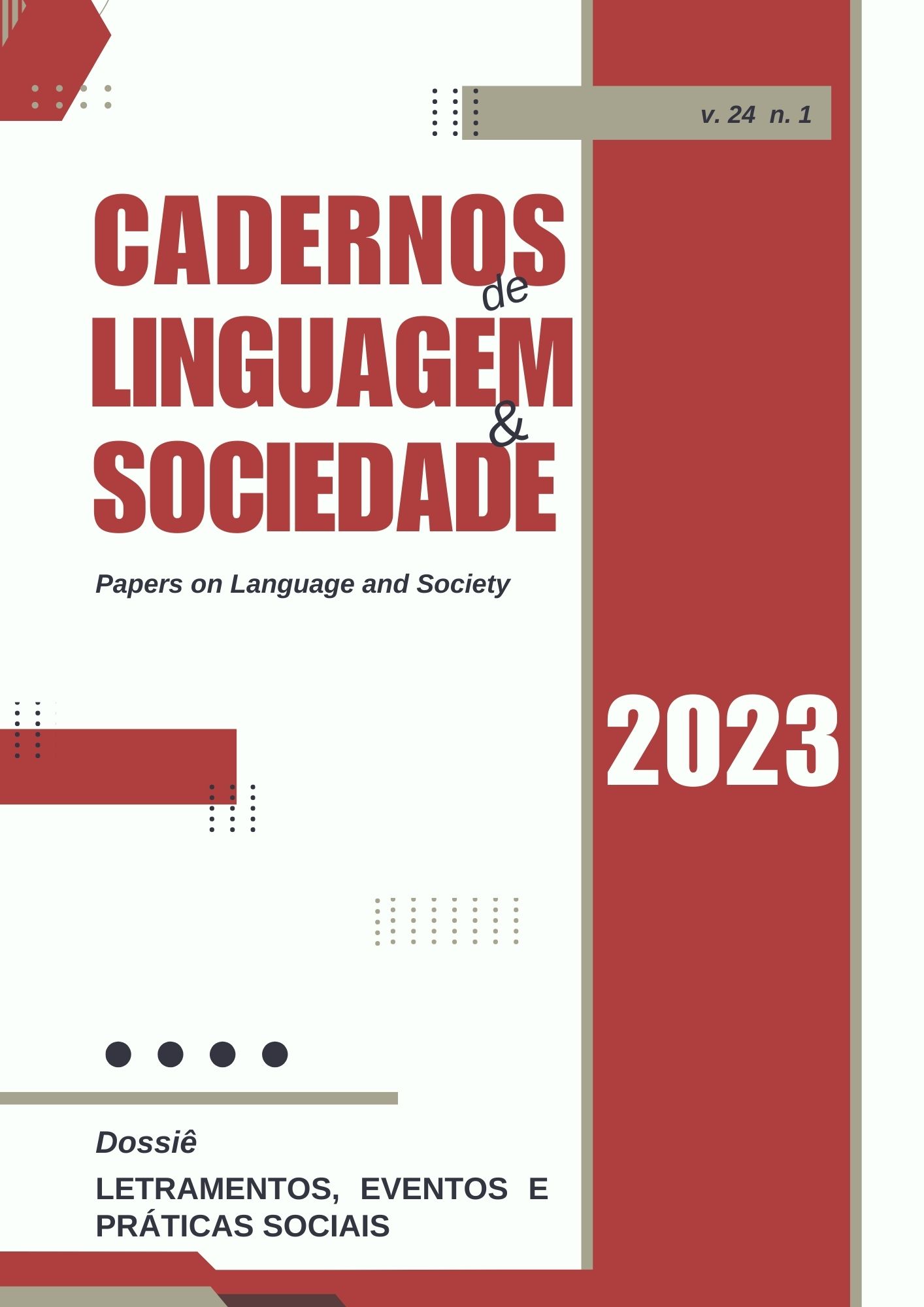“Woman found dead"
feminicide in online news
DOI:
https://doi.org/10.26512/les.v24i1.44215Keywords:
discourse, feminicide, gender, feminismAbstract
This study combines critical discourse analysis and feminist studies to examine twenty-two news stories about femicide in online newspapers in a city in the interior of Brazil. The cases occurred between 2015 and 2019, after the passage of the Feminicide Law, which brought a new understanding of the murder of women. The analyzes focus on the links between the language of news and the ideological structuring of the Brazilian historical-social context and the struggles for women's rights. The results show little articulation with the gender construct expressed in the Feminicide Guidelines.
Downloads
References
BRASIL, Secretária Especial de Políticas para as Mulheres. Diretrizes Nacionais Feminicídio. Investigar, processar e julgar com perspectiva de gênero as mortes violentas de mulheres. SPM: Brasília, 2016.
BUCHOLTZ, M. The Feminist Foundations of Language, Gender, and Sexuality Research. In: EHRLICH, S.; MEYERHOFF, M.; HOLMES, J. (Ed.). The handbook of language, gender, and sexuality. Nova Jersey: John Wiley & Sons, 2014 p. 23-47.
CFOJA, Canadian Femicide Observatory for Justice and Accountability. The history of the term ‘femicide’. Ontario: University of Guelph, 2020 [on-line]. Disponível em: <https://www.femicideincanada.ca/about/history>. Acesso em 05 de Agosto de 2020.
FAIRCLOUGH, N. Analysing discourse. New York: Routledge, 2003.
FREITAS, L. G. de. A decisão do STF sobre aborto de fetos anencéfalos: uma análise feminista de discurso. Alfa: Revista de Linguística (UNESP. IMPRESSO), v. 62, p. 11-34, 2018.
FREITAS, L. G. de.; MENDES, I. C. Abordagens feministas de análise de discurso: a formação de um campo. In: REIS, M. B. F, ; LIMA, S. (Org.). Pesquisas em educação e linguagem. Anápolis: UEG, 2017, p. 415-422.
MOITA LOPES, L. P. (Org.) Por uma Linguística Aplicada Indisciplinar. São Paulo: Parábola Editorial, 2006.
LAGARDE, M. femicidio al feminicidio. Revista Desde el jardin de Freud, v. 6, p.216-225, 2006.
LAGARDE, M. El feminismo en mi vida: hitos, claves y topías. México: Inmujeres DF, 2012.
LAZAR, M. Politicizing gender in discourse. In: LAZAR, Michelle (Org.). Feminist Critical Discourse Analysis: Gender, Power and Ideology in Discourse. Basingstoke: Palgrave Macmillan, 2005 p. 1-28.
LORDE, A. Sister outsider: essays and speeches. Berkeley: Crossing Press, 2007.
MENEGHEL, S. N. ; PORTELLA, A. P. Feminicídios: conceitos, tipos e cenários. Ciênc. saúde coletiva, Rio de Janeiro , v. 22, n. 9, p. 3077-3086, Set. 2017. Disponível em <http://www.scielo.br/scielo.php?script=sci_arttext&pid=S1413-81232017002903077&lng=en&nrm=iso>. Acesso em 07 março de 2020.
RADFORD, J.; RUSSELL, D. E. H. (Org.) Femicide: the politics of woman killing. New York : Twayne, 1992.
RESENDE, V. M. Decolonizing critical discourse studies: for a Latin American perspective. Critical Discourse Studies, v. online, p. 1-17, 2018.
SEGATO, R. Contra-pedagogías de la crueldad. Buenos Aires: Prometeo Libros, 2018.
SCOTT, J. W. Gender: A useful category of historical analysis. The American Historical Review, v. 91(5), p.1053–1075, 1986.
VAN DIJK, T. A. Notícias e conhecimento. Estudos em Jornalismo e Mídia, v.2: 2, p.13-29, 2005.
VAN LEEUWEN, T. The representation of social actors. In: CALDAS-COULTHARD, C. R.; COULTHARD, M. Texts and practices: readings in critical discourse analysis. London: Routledge, 1996. p.33-70.
Downloads
Published
How to Cite
Issue
Section
License
Copyright (c) 2022 Cadernos de Linguagem e Sociedade do Programa de Pós-Graduação em Linguística da UnB é licenciado sob uma Licença Creative Commons Atribuição-Uso não-comercial-Vedada a criação de obras derivadas 3.0 Unported.

This work is licensed under a Creative Commons Attribution 4.0 International License.



